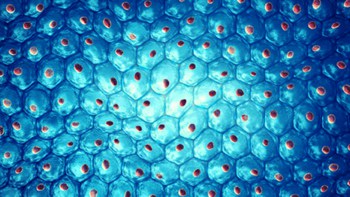Biology in Physics: Is Life Matter?
Konstantin Bogdanov
2000 Academic Press 237pp £37.95/$69.95hb

Interdisciplinary research is currently in fashion, and no interface is more in vogue than that between physics and biology. But whereas the subject matter of, say, chemical physics or materials physics is relatively well defined, there is no such agreement on what constitutes biological physics, and no broad research programme to follow.
Even the name is in doubt. “Biophysics” is one option, but that name is already in use for something slightly different – a thriving subdiscipline of biochemistry, with professional societies and journals already in place. And biophysics in this sense is really about biologists using physics, rather than physicists solving problems in biology.
To convey a sense of the latter, one sometimes sees the cumbersome phrase “biologically inspired physics”. This suggests how we should carry out such activities, namely by looking at biology and searching for inspiration from it. But although such an approach puts physics back in the driving seat, it hardly defines a coherent research programme.
The claim made by Konstantin Bogdanov in Biology in Physics is that the book “covers all the important topics in modern biophysics”. However, I think that this is very far from being true. One should instead see the book as a series of anecdotes, each telling the story of one specific application of physics to biology. The approach is unsystematic, but the book is nonetheless appealing and full of interest. On one page there is a description of how bats hunt using echolocation, while a few pages later we follow an order-of-magnitude calculation explaining how a karate expert can break a concrete block with a bare hand.
Sometimes the information veers towards the sort of interesting fact useful only for particularly recondite pub quizzes, as we learn, for example, how the Romans recommended the use of electricity-producing fishes for the treatment of gout. Nevertheless, despite the breezy and attractive writing style, and the relatively simple science, there are fairly comprehensive recent references so one could follow up a particularly interesting subject in more depth.
The bias of the author is clearly towards biomechanics and physiology, rather than molecular biophysics. In terms of the style and coverage, I am reminded of the books of the zoologist Steven Vogel, and particularly Life’s Devices (Princeton University Press, 1989), which covers quite a lot of the same ground at a similar level.
What is different about Biology in Physics is its extensive coverage of the physics underlying the way the senses work. There is up-to-date material on the physics of hearing, and a readable chapter describing the physics of vision, which touches on the differences and similarities between the eyes of vertebrates, insects and molluscs. Towards the end of the book is a short but fascinating chapter on how magnetism helps animals to sense direction.
The kind of physics that the author relies on is largely classical mechanics and fluid dynamics – rather than statistical mechanics and quantum mechanics. There is also little mention of molecules. This leads to the complete absence of many important biological problems currently being studied by physicists. There is, for example, no mention of the folding of proteins, the coiling of DNA or the fluctuations of membranes.
Also missing from the discussion is the whole, though rather vaguely defined, area of the application of systems theory and non-linear science to biology. For example, ideas of complexity and self-organization are finding tentative applications in areas of biology as diverse as the evolution of species, sensory-information processing and morphogenesis. Of course, these ideas are still imperfectly formed – even half-baked. And while they are certainly controversial, their absence from the book makes one feel that the author has missed the chance to take on some of the really big ideas in biology.
Put another way, we should note that no biologist would have a problem with this book. There is certainly a virtue in rehearsing those areas of biology in which physics can make an unquestionable and uncontroversial contribution. But the creative tension that could produce big advances at the interface of physics and biology will only come from those areas where the philosophical gulf between physicists and biologists is deepest. These are the areas where biologists question whether physicists have anything to offer the subject at all, and where physicists wonder whether the biologists are completely missing the point. These debates will, however, have to wait for another author.
I certainly enjoyed reading this book, although I am not completely sure at whom it is aimed. Those who teach undergraduate physics will find some rather interesting applications of subjects like mechanics and optics that demonstrate the widespread applicability of physics. The book should certainly encourage physicists to believe that there is a place for their way of thinking in biology, and that in itself is a worthy achievement – even if some bigger themes are passed by.



